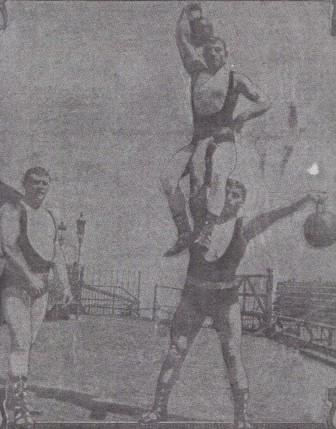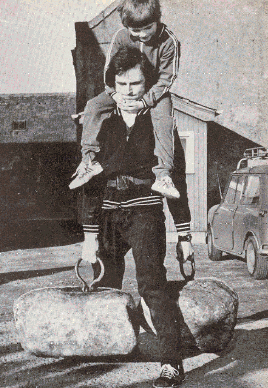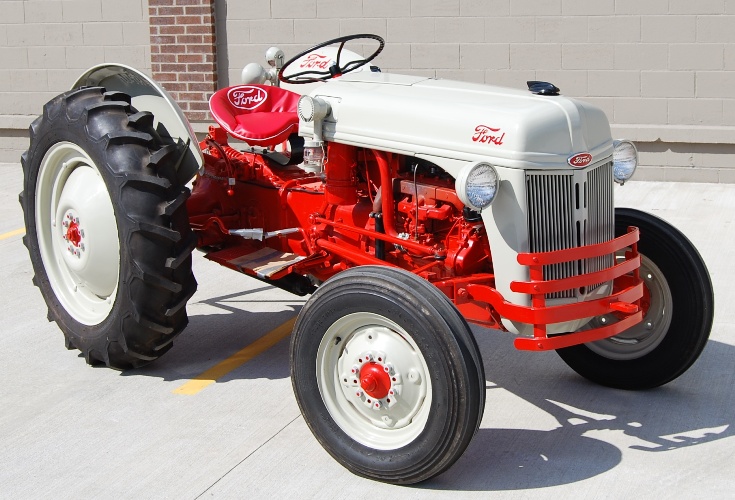The Sheffield Showdown – Saxon vs Sandow
by Thom Van Vleck

Arthur Saxon supporting his brother Hermann, who is seated on a kettlebell. To make the act even more difficult, Arthur is holding out another kettlebell with his other arm!
Al’s recent story on Sandow beating Sampson got me to thinking about another great old time strongman confrontation. When I was a kid, my granddad Dalton Jackson (originator of the Jackson Weightlifting Club) told me this story. My Granddad (or “Pop” as I called him) was a big fan of Arthur Saxon and always seemed to paint Sandow as the villain in his stories. Pop often liked the guy that talked less and showed more and I think he thought Sandow talked a lot more than he lifted and manipulated situations to his advantage rather than winning with his strength.
Arthur Saxon was a master of the Bent Press, which is a USAWA lift and the rules for it can be found in the rule book. At one point, Arthur laid down the challenge to Sandow, or any other strongman, that he could not be beaten in the Bent Press. Money was involved and the honor to be called the World’s Strongest Man was on the line.
As Sandow was the older (around 30 to Saxon’s 19 or 20) and the more established performer at that time, Saxon’s claim was taken very seriously by Sandow. On February 26, 1898 in Sheffield, England the Saxon Trio was performing, and when the challenge was laid down, Sandow jumped to the stage to accept the challenge.
As was the custom of that day, each strongman would pick a lift and go back and forth with the winner often being the man to beat the other at one of his “pet” lifts. First, Saxon lifted a 110lb kettle bell to his shoulder and held it there with his little finger while a 160lb man climbed up his shoulders and sat on the weight. Saxon then bent pressed both. Sandow refused to even try this, and as Pop told me, “broke the unwritten rules of strongman feats”. Saxon then, using his whole hand, took a 180lb Kettle Bell and 188lb Oscar Hilgenfelt, a member of the original Saxon Trio, in the same manner and bent pressed it, but did not stand erect with it. Again, Sandow refused to try it! Finally, Saxon Bent Pressed a 264lb barbell and stood erect with it on his second try. Sandow, very fresh having passed up every feat to this point, agreed to try the lift. I recall Pop painting Sandow as purposely trying to wear Saxon out before finally answering a challenge. Even with this ploy, it took Sandow 5 tries to get the weight to arms length but he did not stand erect with the weight. Saxon claimed victory, and in my mind, rightfully so!
Saxon began to use the event to promote his shows and the “sore loser” (as Pop called him) Sandow then took his only recourse, which was to sue Saxon in court since he couldn’t beat him on the platform. Sandow, being the home country favorite and significantly better financed (seem not much has changed about courts….money wins!) won a decision after getting a witness to the event to say he lifted the weight and that even though he admitted he did not stand erect with it, he did not have to! Pop made it sound like Sandow claimed he “could have” lifted it, but chose not to! Now the impression I had was Sandow was not only a sore loser, but a cheater! Further, Sandow cried foul that Saxon used a barbell loaded with mercury and that he had “practiced” with it and could counter the Mercury flowing in the bells and keep his balance. While Sandow struggled with the balance each attempt. Either way, Pop told me that if you accepted a challenge, you didn’t cry foul later!
It was some time later I was reading a story on Donald Dinnie, the legendary Highland Games athlete that went 40 years undefeated in the caber toss. Dinnie heard of Saxon, but refused to believe that Saxon’s claims. In October of 1904, Saxon traveled paid a visit to Dinnie and using Dinnie’s weights, bent pressed 340.5lbs. After that, Saxon had Dinnie’s support and praise.
Now, I don’t mean to ruffle the feathers of Sandow fans out there, I just wanted to convey the story of a great event in strength history and from the perspective of how it was told to me as a young boy by a man that lived not too long after the event transpired! But truth be told, to this day, Arthur Saxon is my favorite!

